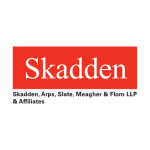Section 1 – PRIVATE EQUITY LANDSCAPE
1.1 How would you describe the current state of private equity activity in your jurisdiction, including the most common forms of private equity transactions?
Record levels of capital available for investment and historically low interest rates for acquisition financing should produce an upsurge in private equity (PE) activity. However, buyers are struggling to find quality assets at attractive prices as a result of competition for assets and a need for stricter discipline in purchase price multiples.
PE buyers therefore continue to engage in add-on acquisitions, with a focus on enhancing the value of existing portfolio companies. Low interest rates and accessible debt markets have also facilitated leveraged recapitalisations. Although PE sellers appear to be well positioned for portfolio company sales, the resurgence of acquisition activity continues to be challenged.
1.2 Are there any factors that make your jurisdiction attractive to private equity investment at this time or that will spur private equity investment in the near term?
Due to continuing economic uncertainty and volatility in other markets, US targets remain attractive to buyers seeking to take advantage of low interest rates and the perceived safety of investing in the US. Financial sponsors continue to sit on large capital reserves ear-marked for acquisition-related investment.
Section 2 – SIGNIFICANT LEGAL DEVELOPMENTS
2.1 Have there been any recent regulatory developments, including tax developments, in your jurisdiction affecting the raising, formation, governing terms or operation of private equity investment funds or investments made by funds?
There is continued debate over matters ranging from information disclosure to carried interest taxation of US funds. The Dodd Frank Act has been a principal development, requiring US PE fund managers to register as investment advisors with state or federal authorities. The Consumer Finance Protection Bureau has, in some cases, targeted portfolio companies in consumer-facing industries and is likely to have a continuing impact.
2.2 Have anti-corruption legislation and/or environmental, social and governance principles affected the approach of private equity investors and/or transaction terms?
PE funds have received increased focus from the Securities and Exchange Commission (SEC) and the Department of Justice (DOJ) for violations of the Foreign Corrupt Practices Act (FCPA). PE funds must be sensitive to FCPA-compliance in fundraising, where relationships between sponsors and sovereign wealth funds have become the subject of government scrutiny, and acquisitions, where FCPA-compliance in due diligence can be critical to preserving investment value and avoiding enforcement actions against targets and their sponsors.
Environmental and socially responsible investment funds have increased in number. In one extreme case, the institutional investors of a major US PE fund forced the fund to seek a sale of a portfolio company that manufactured assault weapons.
2.3 Could a private equity sponsor (and/or its directors, officers or employees) be exposed to liability for a portfolio company's actions or omissions in your jurisdiction and if so, on what legal grounds?
Limited partnerships used in the US as fund vehicles place clear limitations on the liability of limited partners for actions of the partnership and its portfolio investments. In rare instances, claims of veil-piercing can be made to lift the limited liability shield. Other regimes, such as those imposing liability for pension obligations and trust fund taxes, can expose general partners to vicarious liability. A 2013 US First Circuit Court of Appeals case, Sun Capital Partners III v New England Teamsters and Trucking Industry Pension Fund, held that under certain circumstances, a PE fund or its other portfolio companies may be liable for the unfunded pension obligations of one of the fund's portfolio companies. While the decision is not binding on courts in other US federal circuits, it underscores one type of risk funds may face in the US.
Section 3 – FUND FORMATION AND STRUCTURE
3.1 Please describe the typical legal structure used to establish private equity funds, including the primary securities law considerations in private equity fund formation.
In the US, legal entities are created under state (rather than federal) laws. Delaware is the most common state in which to form an entity because it has a developed body of corporate and alternative entity (such as limited partnership and limited liability company) law, sophisticated courts, and an efficient administrative framework facilitating corporate activities.
Funds typically raise capital from institutional investors and sophisticated third parties, who acquire limited partnership interests in the fund. To comply with US securities laws, funds are generally raised through private placements to prospective investors that satisfy sophistication standards. Private placements typically involve a disclosure document (private placement memorandum) that contains disclosure information regarding the fund, its structure and related economics, the PE fund sponsor, the fund's investment objectives, and other information material to investors' decisions.
3.2 How are carried interest arrangements typically structured and is there a prevailing methodology for calculating the sponsor's carried interest?
The PE sponsor's carried interest entitles it to receive a specified percentage – typically 20% – of the upside on the fund's investments after the fund returns invested capital plus a preferred return to limited partners. Preferred return or hurdle requirements are calculated to require a specified internal rate of return on invested capital before the carried interest kicks in. Carried interest can be structured on a deal-by-deal or whole-fund basis; deal-by-deal arrangements pay the sponsor a return on successful deals, without reference to whether other fund investments, or the fund as a whole, are profitable.
3.3 Are fund investors typically subject to claw back or a return of distributions to cover their respective allocations of fund liabilities, such as indemnification payments?
US funds typically include clawback rights that require investors to return a portion of distributions to cover fund liabilities (such as indemnification payments). Clawback obligations are generally subject to caps and time limitations.
Section 4 – STRUCTURE OF ACQUISITION VEHICLE
4.1 What type of entity is typically used as the acquisition vehicle for private equity investments in your jurisdiction? What are the key factors that determine the choice of entity?
Funds typically create limited liability companies (LLCs) or corporations to serve as the acquisition vehicle for investments (see 3.1). The key factor in deciding entity form is tax treatment; corporations are subject to income tax and LLCs are generally pass-through or disregarded entities from a tax perspective.
Considerations for choosing an acquisition vehicle structure tend to be based on the target's structure, desired tax treatment and nature of the investors.
4.2 Does the structure of the acquisition vehicle vary depending on the nature of the investors in the private equity purchaser's fund?
Certain tax-exempt investors may require a corporate or other taxable entity to act as a blocker between the investor and the acquired portfolio company so the investor can avoid UBTI – unrelated business taxable income. The fund may use a corporation as its acquisition vehicle or allow tax-exempt investors to participate through an alternative investment vehicle. Numerous considerations come into play when contemplating alternative investment vehicle structures, because of the disparate tax treatment of interests held by investors who come into the investment through a blocker versus those who come in directly through a pass-through structure.
4.3 Describe how the choice of acquisition vehicle affects the nature of the incentive equity compensation that can be offered to management.
One advantage of using an LLC as an acquisition vehicle is that it allows the fund to grant the management team incentive equity compensation in the form of profits interests – a share of the appreciation of the company's value after the grant date. The profits interest recipient becomes an immediate member (equity holder) of the LLC and may receive beneficial tax treatment. Additionally, profits interests from LLCs and other alternative entities can be designed with a wide range of features, making them particularly attractive as incentive and retention tools.
Corporations use stock options, restricted stock awards or similar equity-based or linked compensation, which can be structured to have largely the same economic benefits as profits interests, but generally do not receive the same beneficial tax treatment.
Section 5 – ACQUISITION STRUCTURE
5.1 What are the typical structures used by private equity sponsors to acquire portfolio companies in your jurisdiction? What are the major considerations that govern this decision?
Private company acquisitions are typically structured as mergers, equity sales or asset sales. Public companies are typically acquired by merger or tender offer. Given the relatively larger and more disparate base of public company stockholders, structures providing for collective action – such as mergers and tender offers –are typically more viable.
5.2 What are the major issues that drive deal timing in your jurisdiction, including disclosure obligations financing and regulatory approval requirements?
Most US PE transactions involve a delay between the signing of a definitive acquisition agreement and acquisition closing.
The Hart-Scott-Rodino (HSR) Act requires that parties in certain size transactions file a notification with the Federal Trade Commission and DOJ. Transactions involving international operations may require additional notifications and approvals based on the applicable jurisdiction's competition laws.
If the target is a public company, or if publicly-traded securities will be used either as consideration in the transaction or for financing, then the transaction will require the preparation of a proxy statement or prospectus that may be subject to review by the SEC.
Additional approvals may be required if the target operates in a regulated industry, such as insurance, telecommunications or energy.
As PE-sponsored transactions typically involve leveraged debt financing, there is generally a period between the date the acquisition agreement is signed and the completion of the financing and receipt of funds on the closing date.
Section 6 – GOVERNANCE
6.1 Are there any legal requirements in your jurisdiction that would prevent or otherwise affect the ability of a private equity acquirer to designate members of the board and/or management of its portfolio companies? Are there any legal risks for the private equity acquirer in designating such members?
There are generally no restrictions on the acquirer's ability to designate members of the board and management of portfolio companies (see 6.3) Having at least some independent directors on the board is desirable, as the presence of majority board control by the sponsor can lead to questions regarding the process undertaken in approving insider transactions.
6.2 Are veto rights over major corporate actions (such as dissolution and winding up, merger or consolidation, significant acquisitions or dispositions, incurrence of material indebtedness, or changing the business of the company) typical rights held by private equity acquirers? Are there any limitations or prohibitions on such rights?
PE acquirers hold veto rights over major corporate actions, either expressly through negotiated LLC or stockholders agreements, or through de facto control of the board of directors or managers. As control investors, PE sponsors have control over these issues by virtue of stock ownership and related voting rights, and through board representation. In cases involving a significant minority co-investor, these rights may be given to protect the interests of the minority holder.
6.3 Do private equity funds or any board members they appoint, have any fiduciary or other duties to minority equity-holders or other stakeholders of a portfolio company? Eg are there any prohibitions against acquisitions of, or investments in, competing or complimentary businesses?
The default provisions of Delaware law generally impose fiduciary duties on controlling equity holders and board members to act in the best interests of the portfolio company and its stockholders. However, Delaware law favours freedom of contract in the case of LLCs and other alternative entities, therefore permitting fiduciary duties and corporate opportunities to be expressly disclaimed in LLC agreements. A controlling stockholder of a corporation such as a PE sponsor may also owe duties directly to the minority holders, so care must be taken when taking action that affects the interests of the minority. This is particularly true where an interested transaction is being considered.
Section 7 – DEAL TERMS
7.1 What pricing structures are typically preferred by private equity sponsors in your jurisdiction?
Although a purchase price may be negotiated based on a multiple of EBITDA (earnings before interest, taxes, depreciation, and amortisation) or other financial metrics, the base price in a definitive acquisition agreement is typically expressed as a fixed dollar amount (subject to adjustment based on the target's indebtedness, cash, working capital and transaction expenses). Price adjustments are typically estimated for purposes of payment at closing and subject to a true-up procedure. Earn-outs and other contingent post-closing payments based upon the target's performance are also sometimes used.
7.2 What is the typical scope of the representations and/or warranties, covenants, undertakings and indemnities provided by a private equity seller and the target company's management team to an acquirer in an acquisition agreement?
PE sellers seek certainty with respect to their obligations and seek to limit the scope of the representations and their exposure for indemnification based upon strict caps and time limitations.
Target company management teams are not typically asked to make representations or undertakings in their personal capacity (separate from their proportionate interest in the sale proceeds) but may be asked to agree to non-competition restrictions or their employment terms post-acquisition.
7.3 What are the customary time limits and other limitations on liability applicable to representations and/or warranties given by a private equity seller and the target company's management team?
Liability limitations are negotiated deal to deal depending on the transaction. Competitive sale processes can result in little or no post-closing exposure for the seller. However, if significant contingencies are identified, the resulting post-closing obligations may be significant and subject to softer limitations. Frequently, representations and warranties survive for 12 to 18 months post-closing and are subject to a deductible or basket of 0.5% to 1% of the purchase price. Caps vary, but in sponsor sales are typically less than 10% of the purchase price.
7.4 What methods are typically used to fill any 'warranty gap' in your jurisdiction? Is warranty and indemnity insurance commonly used in private equity transactions in your jurisdiction?
The use of warranty and indemnity insurance in PE transactions is increasing in popularity and is expected to become more standard, but is still not widespread. Increasingly, insurers are able to make these policies available on a timely and cost-effective basis.
7.5 What conditions to a private equity sponsor's obligation to complete an acquisition are typically included in the acquisition agreement? Are these conditions usually substantially aligned with the conditions included in the financing documentation?
Acquisition completion conditions typically include the accuracy of representations and warranties (subject to material adverse effect or materiality tests), performance of pre-closing covenants and absence of any material adverse effect on the target company.
Financing conditions are resisted by sellers, making it critically important for the acquirer to ensure that conditions to closing the acquisition are aligned with the conditions to financing.
7.6 To what extent are purchaser funds at risk for the equity capital committed to a transaction? Are third-party beneficiary rights or other enforcement rights typically made available to the seller?
Sellers require funds to deliver an equity commitment letter which, together with the debt commitment letters delivered by lenders, provides an aggregate commitment sufficient to complete the transaction. Third-party beneficiary rights and other enforcement rights are frequently included in equity commitment letters for a seller's benefit. Parties will negotiate to determine the extent to which a sponsor can be forced to fund its commitment in circumstances where a deal will not close.
7.7 How is a management team's equity participation typically structured, including customary types of equity interest, percentage holding of equity and approximate level of investment?
Management teams may be asked to roll over portions of their target company equity into the acquired company in order to incentivise their focus on business growth. The acquirer will generally create a new equity pool for grants to management and new members of the management team. The percentage held by or awarded to management will differ across transactions. Typically, a new equity plan of 10% of the outstanding equity will be put in place at closing. Roll-over percentages vary, but can be 30% or more.
About the author |
||

|
|
Steven Daniels Partner, Skadden Wilmington, US T: +1 302 651 3240 F: +1 302 552 3240 Steven Daniels is a partner in Skadden's Wilmington office. He has a broad-ranging corporate practice focused primarily on M&A, private equity transactions and securities law matters, as well as providing advice on issues of Delaware law, including fiduciary duty and corporate governance matters. |
About the author |
||

|
|
Richard West Associate, Skadden Wilmington, US T: +1 302 651 3178 F: +1 302 574 3178 Richard West is an associate in Skadden's Wilmington office. He focuses on M&A matters, including private equity transactions. |
